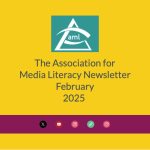Through and About by Neil Andersen
Through & About
A December, 2023 meta-research paper from Sage, Do New Forms of Reading Pay Off? A Meta-Analysis on the Relationship Between Leisure Digital Reading Habits and Text Comprehension, concludes that—for early readers—reading comprehension is NOT positively affected by reading digital text. Specifically, it states that leisure reading from paper is more effective for successful comprehension. (“At early stages (primary and middle school) negative relationships are observed between leisure digital reading and text comprehension, while at later stages (high school and university) the relationship turns positive.”)
This is a meta-research paper, “meta” being a research code word meaning that NO original research was conducted by the researchers. Rather, the team curated research papers from 2020-2022 and identified patterns of learning-to-read. One challenge with meta-research is that the multiple papers have to be categorized and report readers will not know what criteria were used to place them. Readers have to trust the authors’ judgement that they sorted and interpreted the reports accurately.
Ironically, 2020-2022 were also the peak Covid-19 pandemic years, so readers might wonder what effects the stresses and interruptions of pandemic chaos had on the research processes. We know, for example, that many students lost months or years of learning as a result of moving to online learning, and this shift might also have impacted their reading-learning.
This report’s conclusion connects to a BIG ‘through & about’ media literacy concept. Specifically, it means that the content (the through part) stays the same, but that the form (the about part) has an impact on learning to read, curiously different for elementary and secondary learners.
There are many casual readers who have tried reading digital text, not enjoyed the experience, and returned to paper-based text. I am not one of those readers: I read voraciously from my smartphone and enjoy the convenience of determining font, size and colour and always having casual reading available. But maybe those who have tried and rejected e-book readers have done so for reasons that align with the results of these researches—it makes reading harder, less pleasurable. Even more importantly, the conclusions have significant implications for reading instruction. If reading comprehension for elementary readers is more difficult and/or reduced when reading from screens, teachers and students need to know this and need to consider reading instruction modifications. Perhaps some students comprehend digital texts successfully, while others might need to change media to paper texts. This report identifies a new differentiation strategy that teachers need to know, assess and use. Teachers might be wise to imagine an assessment that will help them choose the most appropriate medium for their students’ casual reading. Discussing these differences and challenges with students as well as testing their comprehension with the screen and paper media experiences might become a standard aspect of reading instruction.


